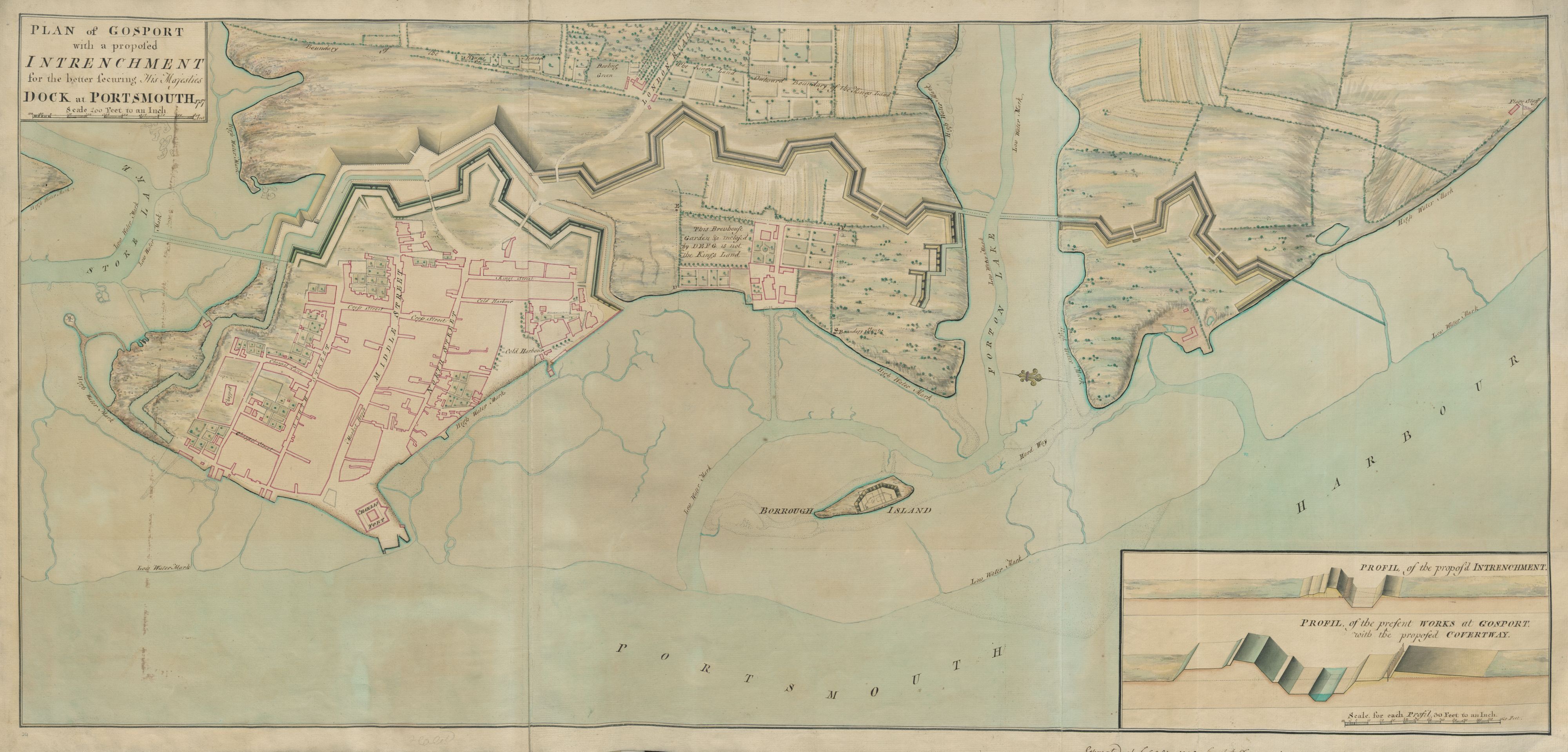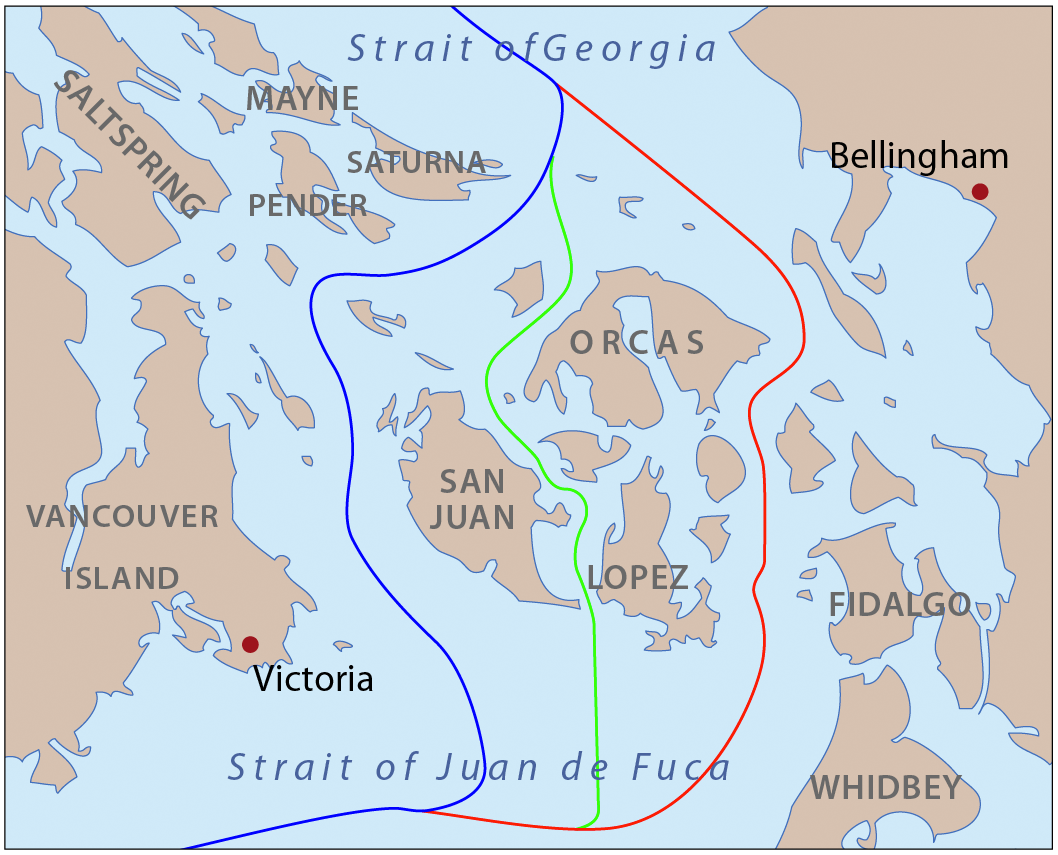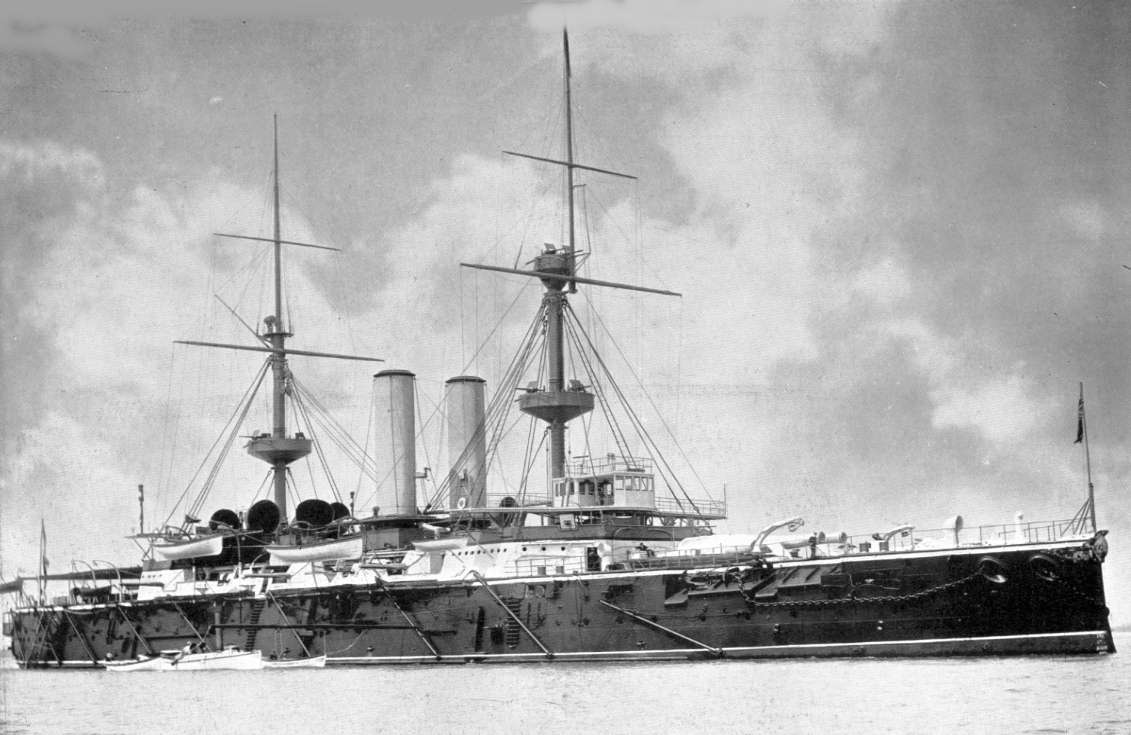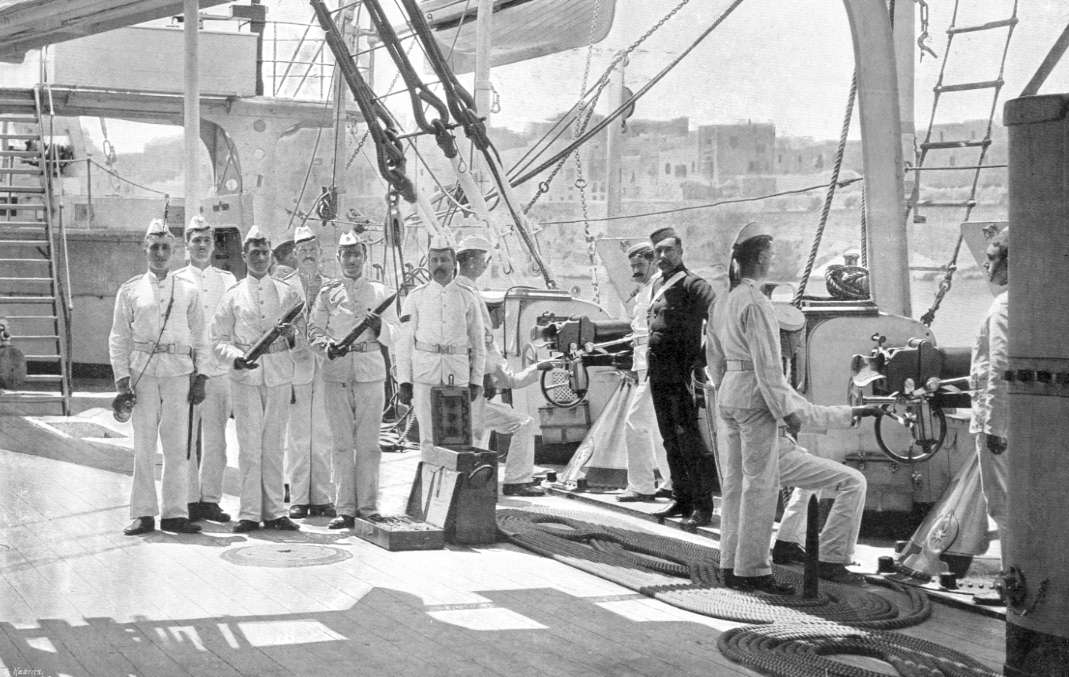|
Charles Cooper Penrose Fitzgerald
Charles Cooper Penrose-Fitzgerald (30 April 1841 – 11 August 1921) was a vice admiral in the Royal Navy. Family His father was Robert Uniacke Penrose (1800–1857) who married Francis Matilda Austin, daughter of the Revd Robert Austin, prebendary of Cloyne Cathedral. Charles married Henrietta Elizabeth Hewson on 29 November 1882, daughter of Revd Francis Hewson of Dunganston, Wicklow. They had a son John Uniacke Penrose Fitzgerald (27 July 1888 – 11 December 1940) who also joined the navy and was killed on active service in World War II. In 1896 Charles changed his own surname to Uniacke-Penrose-Fitzgerald. Career He was educated at Dr. Burney's academy, Gosport, and joined the navy in 1854 on board HMS ''Victory'' at Portsmouth. In 1855 he served in the Baltic and then the Black Sea in 1856. He served on HMS ''Retribution'' on the China station and in 1860 on HMS ''Ariadne''. On 22 May 1861 he was made lieutenant. On 24 July 1871 he became a commander while serving as f ... [...More Info...] [...Related Items...] OR: [Wikipedia] [Google] [Baidu] |
Burney's Academy
Dr. Burney's Academy, founded 1791 by William Burney (1762 – December 1832), was a preparatory school or "crammer" in Gosport, Hampshire, England, whose aim was to prepare young men for the Royal Navy's entrance examinations and a naval career, though many of its students went on to Army or civilian careers. History On the death of Burney, his son Henry took over running of the school, followed by Henry's brother Edward (c.1817-1888), then William's grandson the Rev. Edward Amyatt Amyatt Burney, who became Rector of Rowner, to the north-west of Gosport (1848–1920). The school was sold in 1889. At some time before 1891 it received patronage of Queen Victoria, Prince Albert, the Prince of Wales and the Duke of Connaught, and was renamed the Royal Academy. The Rev. F. G. Johnson was Head Master from 1888 until the school closed in 1904. Notable alumni * Thomas Murray-Prior (1819–1892) * John Cowans (1862–1921) * Charles Cooper Penrose Fitzgerald (1841&nda ... [...More Info...] [...Related Items...] OR: [Wikipedia] [Google] [Baidu] |
Gosport
Gosport ( ) is a town and non-metropolitan borough on the south coast of Hampshire, South East England. At the 2011 Census, its population was 82,662. Gosport is situated on a peninsula on the western side of Portsmouth Harbour, opposite the city of Portsmouth, to which it is linked by the Gosport Ferry. Gosport lies south-east of Fareham, to which it is linked by a Bus Rapid Transit route and the A32. Until the last quarter of the 20th century, Gosport was a major naval town associated with the defence and supply infrastructure of His Majesty's Naval Base (HMNB) Portsmouth. As such over the years extensive fortifications were created. Gosport is still home to and a Naval Armament Supply Facility, as well as a Helicopter Repair base. The Town area of the Borough, including Newtown, consists of the town centre, Stoke Road shopping area, Walpole Park, Royal Clarence Yard and three modern marinas: Royal Clarence, Gosport Marina and Haslar Marina. As part of the ''Renaissa ... [...More Info...] [...Related Items...] OR: [Wikipedia] [Google] [Baidu] |
Richard Meade, 4th Earl Of Clanwilliam
Admiral of the Fleet Richard James Meade, 4th Earl of Clanwilliam (3 October 1832 – 4 August 1907), styled Lord Gillford until 1879, was a Royal Navy officer. As a junior officer, he served at the Battle of Escape Creek and at the Battle of Fatshan Creek during the campaign against Chinese pirates. He also took part in the Battle of Canton, where he was severely wounded, during the Second Opium War. As a senior officer Meade went on to be commander of the Steamship reserve at Portsmouth, commander of the Flying Squadron and Commander-in-Chief, North America and West Indies Station. His last appointment was as Commander-in-Chief, Portsmouth. Early career Born the eldest son of Richard Meade, 3rd Earl of Clanwilliam and Elizabeth Meade (daughter of George Herbert, 11th Earl of Pembroke), Meade was educated at Eton College and joined the Royal Navy in November 1845. Promoted to lieutenant on 15 September 1852, Meade was appointed to the frigate HMS ''Impérieuse'' in whic ... [...More Info...] [...Related Items...] OR: [Wikipedia] [Google] [Baidu] |
HMS Asia (1824)
HMS ''Asia'' was an 84-gun second rate ship of the line of the Royal Navy, launched on 19 January 1824 at Bombay Dockyard. She was Codrington's flagship at the Battle of Navarino. She served in the Syria campaign against Mehemet Ali, in the Eastern Mediterranean, 1840–41 In 1858 she was converted to serve as a guardship, and during several years she was flagship of the Admiral-Superintendent of Portsmouth Dockyard His Majesty's Naval Base, Portsmouth (HMNB Portsmouth) is one of three operating bases in the United Kingdom for the Royal Navy (the others being HMNB Clyde and HMNB Devonport). Portsmouth Naval Base is part of the city of Portsmouth; it is l .... In 1908 she was sold out of the navy. Notes References *Lavery, Brian (2003) ''The Ship of the Line - Volume 1: The development of the battlefleet 1650-1850.'' Conway Maritime Press. . External links * Ships of the line of the Royal Navy Canopus-class ships of the line British ships built in India ... [...More Info...] [...Related Items...] OR: [Wikipedia] [Google] [Baidu] |
HMS Rapid (1860)
HMS ''Rapid'' was an 11-gun ''Rosario''-class wooden-hulled screw-driven sloop of the Royal Navy, launched on 29 November 1860 at Deptford Dockyard and broken up in 1881. Design The ''Rosario'' class were designed in 1858 by Issac Watts, the Director of Naval Construction. They were built of wood, were rated for 11 guns and were built with a full ship rig of sails. With a length overall of and a beam of , they had a displacement of 913 tons. Propulsion ''Rapid'' was fitted with a Greenock Foundry Company two-cylinder horizontal single-expansion steam engine driving a single screw. With an indicated horsepower of she was capable of under steam. Armament As designed ships of the class carried a single slide-mounted 40-pounder Armstrong breech-loading gun, six 32-pounder muzzle-loading smooth-bore guns and four pivot-mounted 20-pounder Armstrong breech loaders. By 1869 the armament had been reduced to a single muzzle-loading gun and two 40-pounders. Service history Fi ... [...More Info...] [...Related Items...] OR: [Wikipedia] [Google] [Baidu] |
Geoffrey Hornby
Admiral of the Fleet Sir Geoffrey Thomas Phipps Hornby GCB (10 February 1825 – 3 March 1895) was a Royal Navy officer. As a junior officer, he saw action at the capture of Acre in November 1840 during the Egyptian–Ottoman War. As a captain, he was assigned to Vancouver Island with a naval brigade where he found a unit of United States troops ready to take over the San Juan Islands in a dispute that became known as the Pig War. Hornby used his powers of diplomacy to facilitate a peaceful handover of the islands to the United States. Hornby went on to be Commander-in-Chief, West Africa Squadron, Commander-in-Chief of the Flying Squadron and then Commander-in-Chief, Channel Squadron. After that he became Commander-in-Chief, Mediterranean Fleet, President of the Royal Naval College, Greenwich and finally Commander-in-Chief, Portsmouth. Early career Born the son of Admiral Sir Phipps Hornby and Sophia Maria Hornby (daughter of General John Burgoyne), Hornby was educated at ... [...More Info...] [...Related Items...] OR: [Wikipedia] [Google] [Baidu] |
Lord Charles Beresford
Admiral Charles William de la Poer Beresford, 1st Baron Beresford, (10 February 1846 – 6 September 1919), styled Lord Charles Beresford between 1859 and 1916, was a British admiral and Member of Parliament. Beresford was the second son of John Beresford, 4th Marquess of Waterford, thus despite his courtesy title as the younger son of a Marquess, he was still eligible to enter the House of Commons. He combined the two careers of the navy and a member of parliament, making a reputation as a hero in battle and champion of the navy in the House of Commons. He was a well-known and popular figure who courted publicity, widely known to the British public as "Charlie B". He was considered by many to be a personification of John Bull, indeed was normally accompanied by his trademark, a bulldog. His later career was marked by a longstanding dispute with Admiral of the Fleet Sir John Fisher, over reforms championed by Fisher introducing new technology and sweeping away traditional prac ... [...More Info...] [...Related Items...] OR: [Wikipedia] [Google] [Baidu] |
Naval Defence Act 1889
The Naval Defence Act 1889 was an Act of the Parliament of the United Kingdom. It received the Royal Assent on 31 May 1889 and formally adopted the "two-power standard" and increased the United Kingdom's naval strength. The standard called for the Royal Navy to maintain a number of battleships at least equal to the combined strength of the next two largest navies in the world, which then were France and Russia. An extra £20 million over the following four years were provided for ten new battleships, thirty-eight new cruisers, eighteen new torpedo boats and four new fast gunboats. The two-power standard was maintained until disarmament began during the inter-war period. Background It was passed under the government of Lord Salisbury and facilitated spending £21,500,000 over five years toward fleet expansion. Initially, Parliament opposed the increase in naval expenditures for several reasons. Expert naval opinions presented to Parliament in December 1888 and February 1889 ren ... [...More Info...] [...Related Items...] OR: [Wikipedia] [Google] [Baidu] |
George Tryon
Vice-Admiral Sir George Tryon (4 January 1832 – 22 June 1893) was a Great Britain, British admiral who died when his flagship HMS Victoria (1887), HMS ''Victoria'' collided with HMS Camperdown (1885), HMS ''Camperdown'' during manoeuvres off Tripoli, Lebanon. Early life Tryon was born at Bulwick, Bulwick Park, Northamptonshire, England, the third son of Thomas Tryon and his wife Anne Trollope. He had three brothers: the eldest, Thomas, joined the 7th Royal Fusiliers, fought at Alma and Inkerman and served through the Indian Mutiny. The second, Henry, passed through Sandhurst, Berkshire, Sandhurst before joining the Rifle Brigade, fighting at Alma, Inkerman and Balaclava before being killed in an attack on Russian positions in 1854. George was the third son: the fourth, Richard Tryon, Richard, also served in the Rifle Brigade. George attended a preparatory school and then Eton College before becoming a naval cadet in 1848, two years older than usual, aged sixteen. The choice ... [...More Info...] [...Related Items...] OR: [Wikipedia] [Google] [Baidu] |
HMS Victoria (1887)
HMS ''Victoria'' was the lead ship in her class of two battleships of the Royal Navy. On 22 June 1893, she collided with near Tripoli, Lebanon, during manoeuvres and quickly sank, killing 358 crew members, including the commander of the British Mediterranean Fleet, Vice-Admiral Sir George Tryon. One of the survivors was executive officer John Jellicoe, later commander-in-chief of the British Grand Fleet at the Battle of Jutland. Design ''Victoria'' was constructed at a time of innovation and rapid development in ship design. Her name was originally to be ''Renown'', but this was changed to ''Victoria'' while still under construction to celebrate Queen Victoria's Golden Jubilee, which took place the year the ship was launched. Her arrival was accompanied by considerable publicity. She was the largest, fastest and most powerful ironclad afloat, with the heaviest guns. She was the first battleship to be propelled by triple-expansion steam engines. These were constructed by ... [...More Info...] [...Related Items...] OR: [Wikipedia] [Google] [Baidu] |
HMS Camperdown (1885)
HMS ''Camperdown'' was an of the Royal Navy, named after Adam Duncan, 1st Viscount Duncan of Camperdown. Design She was a full sister to , and was an improved version of the earlier and . In comparison to these earlier ships, she had an increased thickness of barbette armour, and a lengthened armour belt. The extra armour carried increased the displacement by ; in order not to increase the draught, she was lengthened by and was given more beam. The guns were carried in two pairs, in barbettes positioned on the centre-line at either end of the superstructure. They were carried at a height of above the full-load water-line, and possessed firing arcs of some 270°. Each shell weighed , and would penetrate of iron at a range of . History ''Camperdown'' was commissioned at Portsmouth on 18 July 1889, and initially went into reserve. In December 1889 she was posted to the Mediterranean Fleet as flagship, where she remained until being posted as flagship of the Channel ... [...More Info...] [...Related Items...] OR: [Wikipedia] [Google] [Baidu] |
Admiral Penrose Fitzgerald Ulk Cartoon
Admiral is one of the highest ranks in some navies. In the Commonwealth nations and the United States, a "full" admiral is equivalent to a "full" general in the army or the air force, and is above vice admiral and below admiral of the fleet, or fleet admiral. Etymology The word in Middle English comes from Anglo-French , "commander", from Medieval Latin , . These evolved from the Arabic () – (), “ king, prince, chief, leader, nobleman, lord, a governor, commander, or person who rules over a number of people,” and (), the Arabic article answering to “the.” In Arabic, admiral is also represented as (), where () means the sea. The 1818 edition of Samuel Johnson's ''A Dictionary of the English Language'', edited and revised by the Rev. Henry John Todd, states that the term “has been traced to the Arab. emir or amir, lord or commander, and the Gr. , the sea, q. d. ''prince of the sea''. The word is written both with and without the d, in other language ... [...More Info...] [...Related Items...] OR: [Wikipedia] [Google] [Baidu] |



.jpg)



